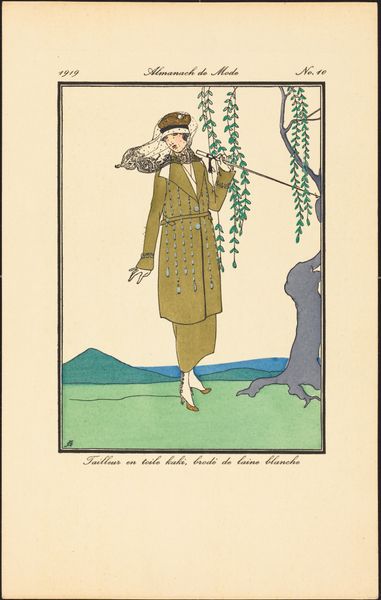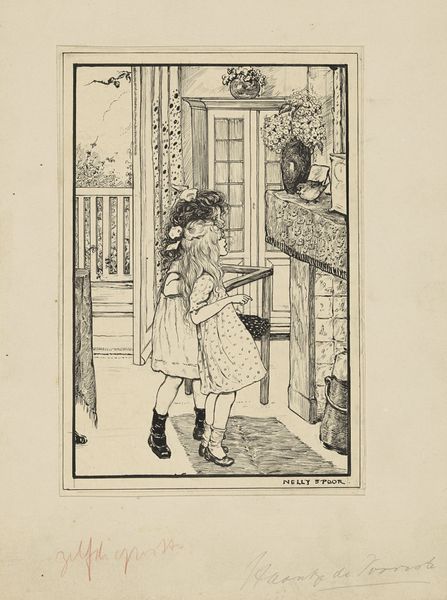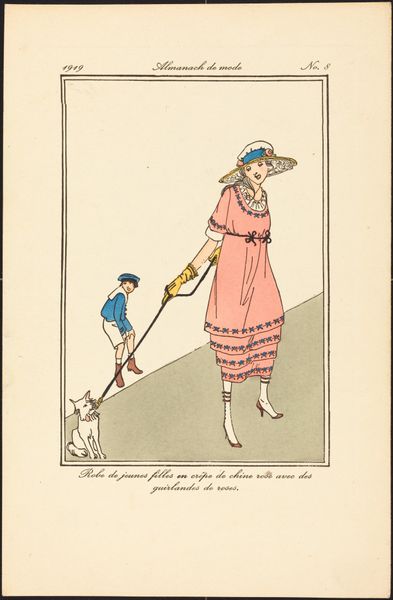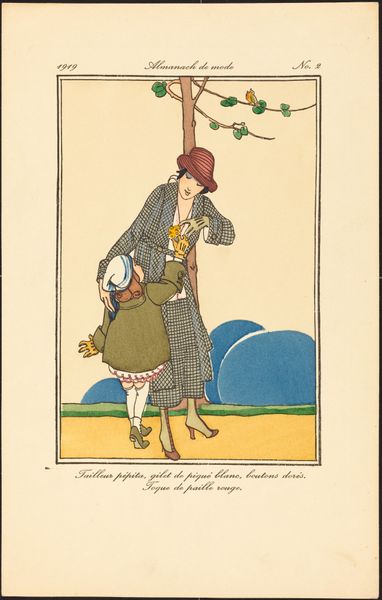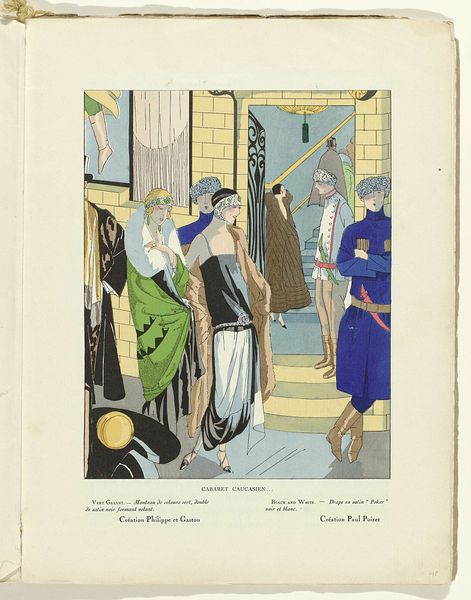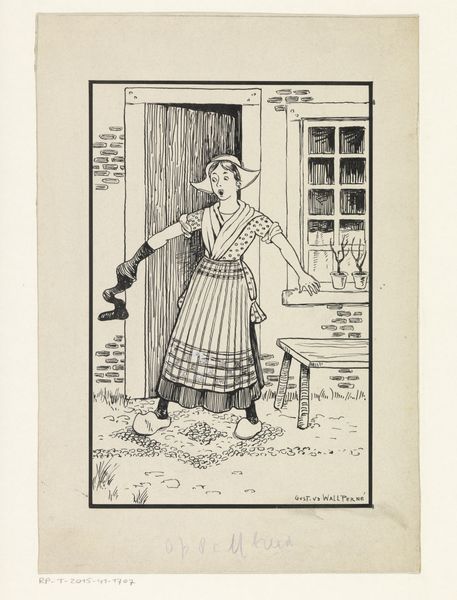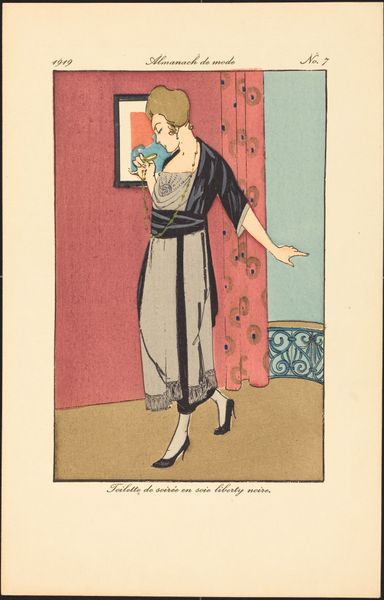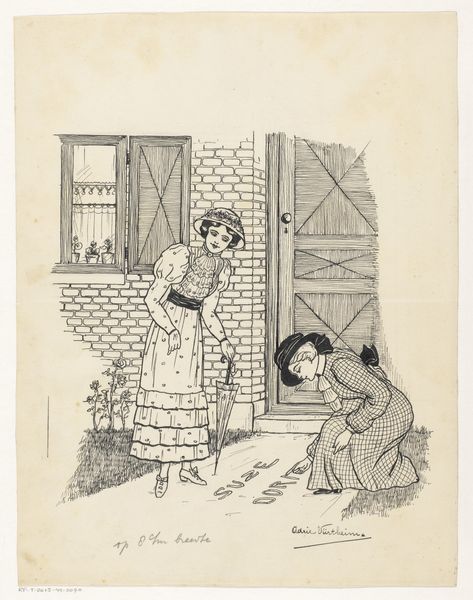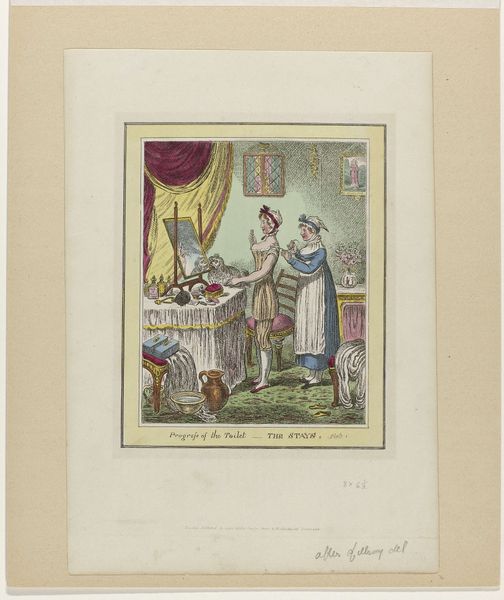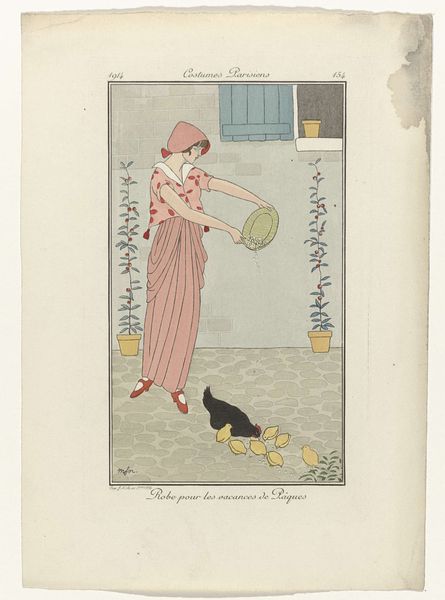
#
art-nouveau
# print
Dimensions: plate: 17.1 x 12 cm (6 3/4 x 4 3/4 in.) sheet: 22.4 x 14.1 cm (8 13/16 x 5 9/16 in.)
Copyright: National Gallery of Art: CC0 1.0
Curator: I’m immediately drawn to the overall flatness of the print. It’s almost like looking at a well-preserved paper doll. Editor: You’re right, there is a playful, stylized quality. What we’re seeing is an image from 1919, a print titled "Tailleur de serge bleu foncé. Képi de paille.” It’s attributed to an anonymous artist, part of a larger “Almanach de Mode” series. The print immediately encapsulates the aesthetic of the post-World War I era. Curator: Definitely. And the materials used… it seems quite mass produced but there's a precision that gives it elegance. I wonder about the role of this “Almanach” in the popular consumption of fashion—how accessible were these prints? Who were the consumers? Editor: These are very insightful points to consider, because who dictates and has access to these representations matters. Notice the aspirational gaze of the figure. She is window shopping, almost desiring inclusion within the ranks of the fashionable. There's a very specific vision of feminine identity being sold here, tied inextricably to consumption. Also, blue dye was getting easier and more accessible at that time due to process advancements in labs. Curator: Interesting. So, there’s an intersection between the fashion industry’s labor demands and a consumer’s ready access to cheaper pigments? It all feeds back into the aesthetic. Editor: Absolutely! The mass production of goods shapes ideals, particularly regarding gendered labor. Even in art, look at how quickly it turns to abstraction! The prints have become flattened images but these silhouettes—that tailored coat, that jaunty little hat—speak volumes about emerging socio-economic realities for women. The figure exists outside the working structure as represented by the mannequins in the shop window which are her potential. Curator: It does raise some questions around the manufacturing and economic elements behind these fashion almanacs. Were these fashion ideals produced ethically? Editor: A crucial point! It makes you consider labor conditions as intrinsic to aesthetic experience. What began as surface enjoyment is actually far deeper if we look at the entire process of what created this beautiful design. Curator: Right. I’ll look at this print differently now. Editor: Exactly, seeing the labor helps to reveal cultural structures.
Comments
No comments
Be the first to comment and join the conversation on the ultimate creative platform.


